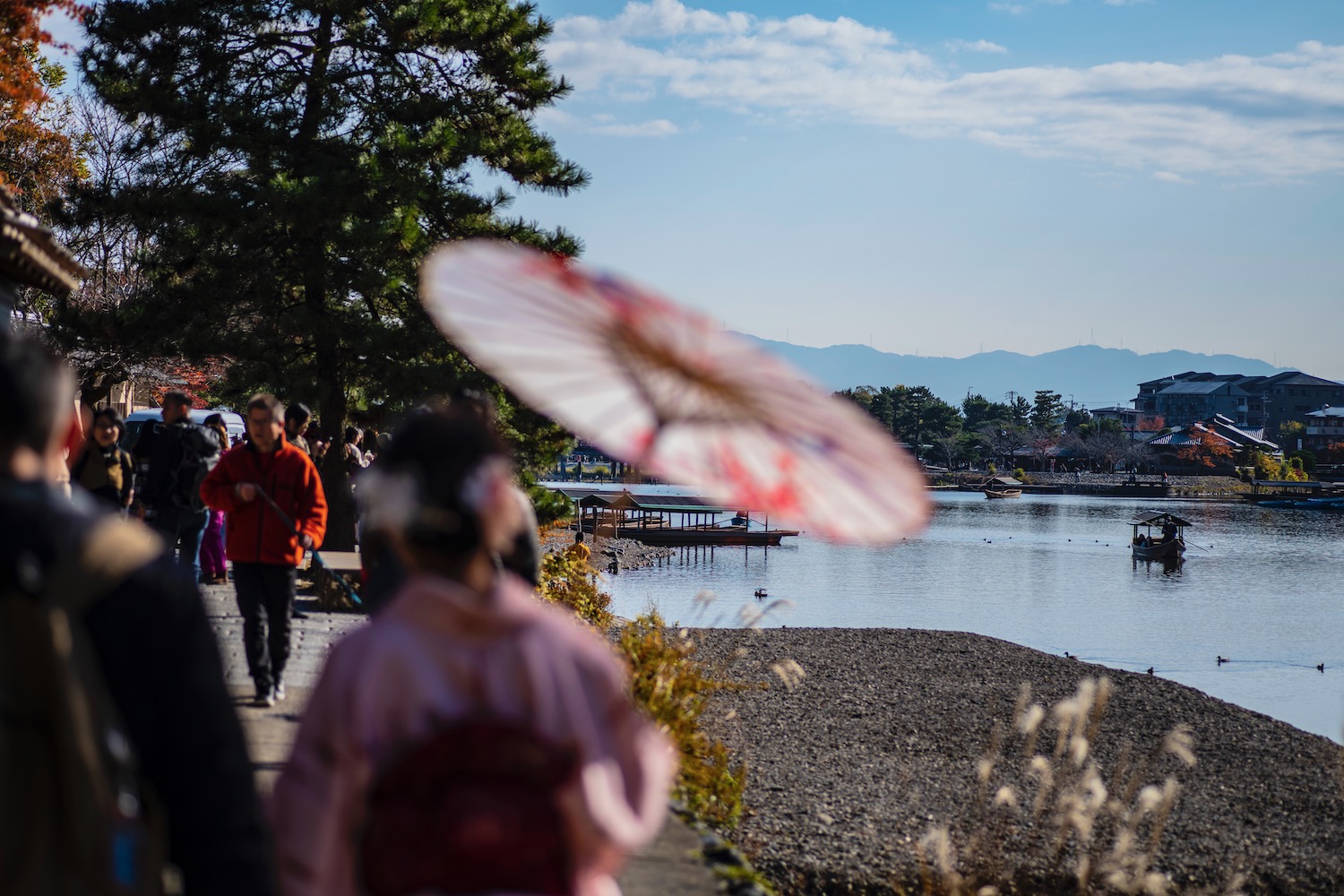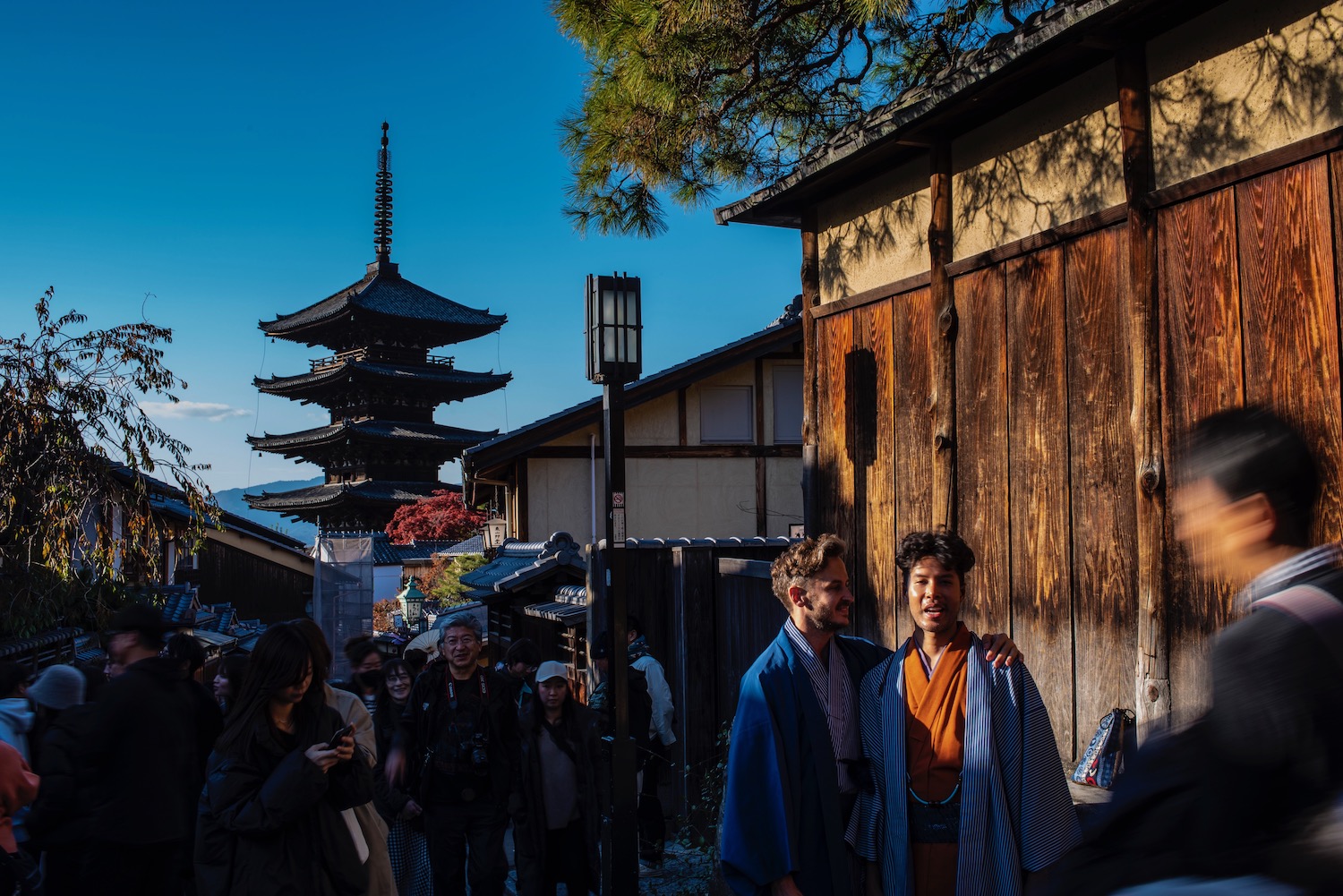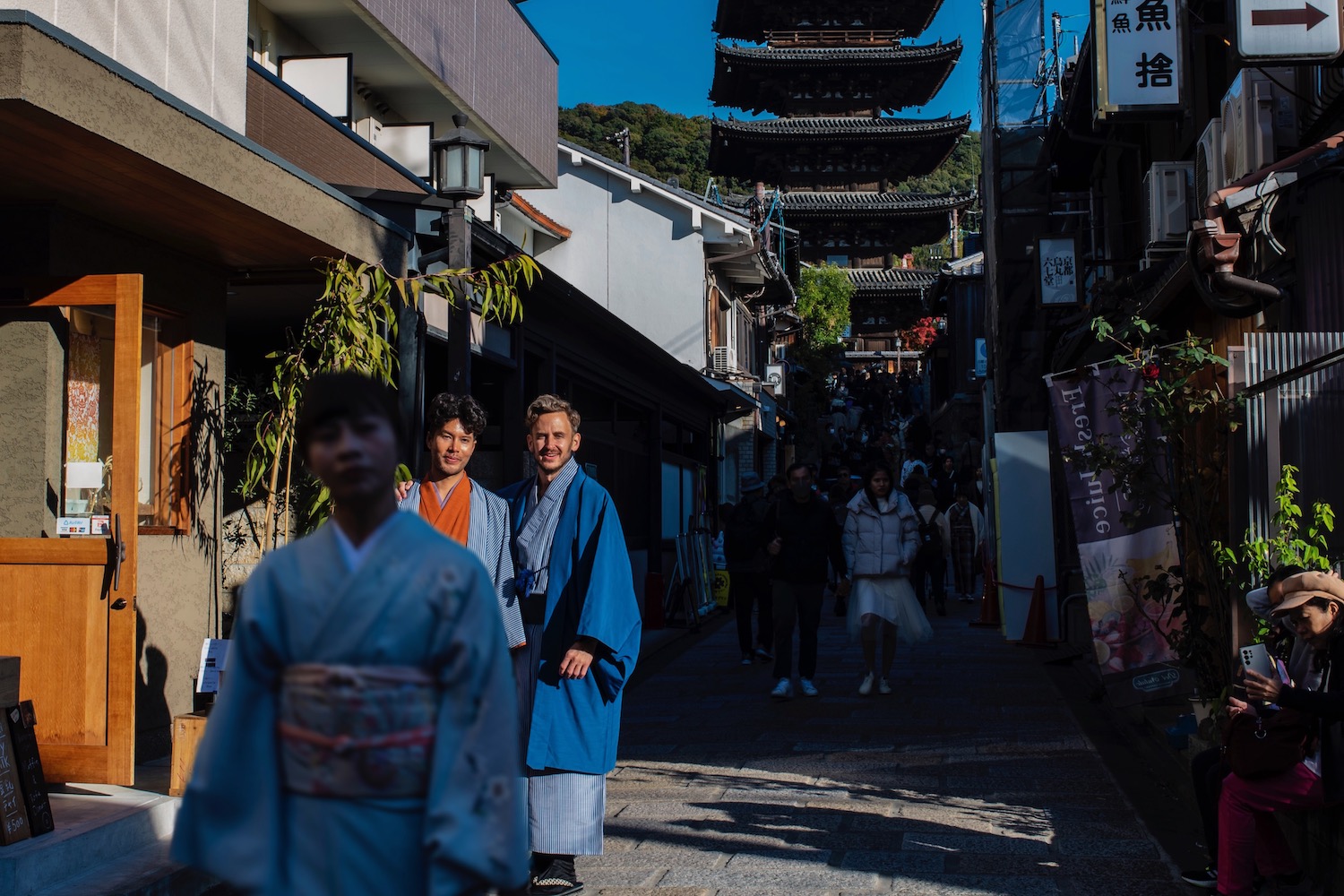Seeing a Geisha was high on my bucket list the first time I visited Kyoto, a decade ago. And when I first took to the streets of the old city, I thought I had struck gold: I saw gorgeous kimono almost everywhere I looked.
Unfortunately, I soon realized that these were not Geisha. Rather, they were foreign tourists wearing the traditional Japanese garment—some of them better than others.
10 years on, dressing up while you sightseeing in Kyoto is more popular than ever—I’ve even done it myself a couple of times, including during Geisha tea ceremonies. Continue reading to learn everything you need to know about kimono rental in Kyoto.
Where to Rent Kimono in Kyoto
Even back in 2014, it was relatively easy to find Kyoto kimono rental outlets. These days, as you can imagine, there are even more choices. One very popular option is Okamoto, which has many outlets near the popular sightseeing spots I’m about to list. A word of caution, however: These shops can get busy, and staff aren’t always as kind as graceful as you’d expect in Japan.
Beyond booking in advance via Okayama (or using a third-party provider such as Viator or TripAdvisor), another choice might be to simply stop in at one of the many kimono rental shops in Higashiyama and Gion. A further option? Inquire with your hotel or ryokan as to whether they can arrange a kimono. Yet another option is to dress in kimono in conjunction with another activity, such as a Geisha tea ceremony—more on that later.
Popular Places to Wear Kimono in Kyoto
Kiyomizu-dera
Although the Higashiyama district, broadly speaking, has a high number of tourists wearing kimono, Kiyomizu-dera temple is probably the specific place where this is the most noticeable. Which makes for great photos, but stressful going, given that walking on geta sandals is difficult even on flat paths—Kiyomizu-dera is up several slopes.
Arashiyama Bamboo Forest
Some tourists who rent kimono in Kyoto instead go by subway and/or JR Line to Arashiyama, in the northwestern part of the city. While these travelers don’t necessarily stick exclusively to the famous bamboo forest, I’d say it’s where the kimono aesthetic looks the most captivating in photos.
Fushimi Inari Shrine
Fushimi Inari Shrine presents an interesting conundrum. The vermilion gates serves as a gorgeous backdrop against which to pose in your kimono. On the other hand, you’ll be battling insane crowds, to say nothing of all the steps you’ll need to climb up while wearing your geta.
Maruyama Park
Many Kyoto kimono rental shops are near Maruyama Park, which is an especially gorgeous place to visit during the peak autumn and spring seasons. Temples notwithstanding, cherry blossoms and colorful leaves make probably the best backdrop for your kimono pictures!
Geisha tea ceremonies
Planning to attend a Geisha tea ceremony? Well, if you plan to do so at Maikoya (my personal favorite place for it), you have the option to wear kimono during the ceremony. This is a great way to make the experience even more special, whether or not you opt to walk around Kyoto wearing the garment during your main sightseeing.

Wearing Kimono Isn’t Cultural Appropriation—It’s Cultural Appreciation
The conversation around cultural appropriation (and around “privilege,” more broadly) hadn’t yet entered the mainstream back when I traveled to Japan the first time. As a result, it wasn’t really on my mind when I started noticing how many foreigners we wearing kimono, even at that time. I thought it seemed uncomfortable and burdensome, but definitely not offensive.
Today, I firmly reject the notion that wearing kimono is cultural appropriation—if anything, it’s cultural appreciation. After all, foreigners who wear kimono aren’t gaining any benefit or advantage by doing so, and certainly aren’t going to all that trouble to mock Japanese culture. And they’re enriching local Japanese entrepreneurs in the process, even if you ignore the fact that many Japanese people take pride in foreigners’ embrace of their traditions.

Other FAQ About Renting Kimono in Kyoto
How much does it cost to rent a kimono in Kyoto?
Depending on your gender and which shop you book from, you can generally expect to pay around ¥4,000 (around 28 USD in early 2024) to rent a kimono. You’ll pay more if you need to get your hair or make-up done, especially if you’re getting actual Geisha make-up.
Can foreigners wear kimono in Kyoto?
Foreigners can absolutely wear kimono in Kyoto! In fact, Japanese people are proud that so many foreigners appreciate and embrace their culture. Not to mention, kimono rental is an extremely lucrative business, so you’re supporting the local economy.
Can you dress up as a Geisha in Kyoto?
It is possible to dress up as a Geisha in Kyoto, but do keep in mind that this is a different service than kimono rental, which just includes basic hair and make-up. If you want make-up and a Geisha up-do, you’ll need to book a more specialized (and expensive) service like this one (which is in Tokyo, be advised).
The Bottom Line
Kimono rental in Kyoto has never been easier, let alone more popular. While some of the more toxic voices on the web might deem this “cultural appropriation,” it’s actually something closer to cultural appreciation. At worst, it’s a (maybe) tacky way to help support the economy of Kyoto while having a little bit of fun in the process. Certainly, it’s an experience you’ll never forget, and will produce some of the favorite photos you take during your entire trip. Want personalized help putting your Japan vacation together? I do hope you’ll consider hiring me to plan a custom itinerary.






